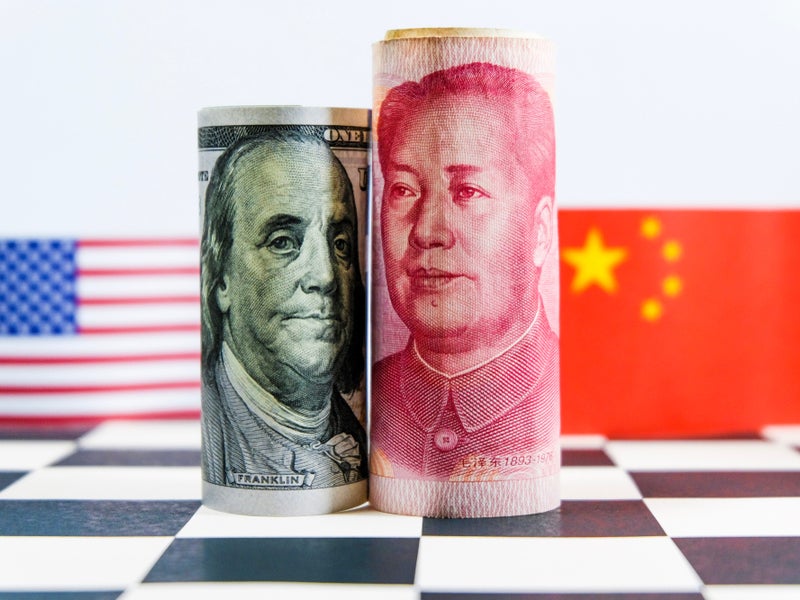
Lower wages in China mean it can produce goods such as medical devices in a less costly way than in the US. Tariffs on Chinese goods, which will be paid by the importers upon entry to US customs, mean that the prices of those goods increase at the consumer side to cover the cost.
The tariff helps US companies compete against China’s price advantage – but a tariff of 25% is astronomical, especially in a country where the trade-weighted average import tariff rate is 2% and half of all industrial goods enter the US enter duty free.

Discover B2B Marketing That Performs
Combine business intelligence and editorial excellence to reach engaged professionals across 36 leading media platforms.
As of July 2019, a small number of medical devices have been exempted from the 25% tariffs, including microwave ablation antennas, tube suspensions used to hold and position X-ray equipment and food allergen analysers. However, the majority still remain on the tariff list for now.
How did we get here?
In April 2018, the Trump administration unveiled a list of more than 1,000 Chinese exports on which it planned to place import tariffs. This was purportedly done in order to punish Beijing for restricting US investment in China and strong-arming US innovators into giving up their intellectual property.
The situation escalated in September that year, when the US Government targeted $200bn worth of Chinese imports with 10% tariffs. China responded in turn, placing tariffs of 5%-10% on $60bn worth of American goods.
Five months of trade talks ensued, brought to a grinding halt when the US raised its Chinese tariff to 25% in May 2019 with less than a week’s notice, crediting an “erosion in commitments by China” as cause for its actions. US officials had previously described the negotiations as “constructive” and “productive”.

US Tariffs are shifting - will you react or anticipate?
Don’t let policy changes catch you off guard. Stay proactive with real-time data and expert analysis.
By GlobalDataThe United States Trade Representative (USTR) initially set out plans to raise levies on “essentially all remaining imports from China”, which are valued at around $300bn, but these plans were postponed “for at least the time being” at the end of June 2019.
In 2018, China exported $539.5bn worth of goods into the US, nearly four times the $120.3bn of American goods exported to China from the US. In 2017, the most recent year for which specific medical technology imports statistics are available, US imports from China were worth around $5bn, while exports to China have grown every year and exceeded $4.7bn.
The ongoing escalation of tariffs has given medical device manufacturers plenty to worry about.
The list of products effected by the 25% tariff includes imaging equipment, diagnostic reagents used in X-ray examinations and dental drills. The tariffs also impact metal alloys such as aluminium and steel, which are used in the manufacturing of many medical devices.
Should tariffs be brought in on the remaining $300bn worth of Chinese imports, plenty more categories of device will be affected, with USTR having considered taxing contact lenses and microtomes in the next round of tariffs.
How is this impacting manufacturers?
US medical device trade association AdvaMed’s executive vice president of global strategy and analysis Ralph Ives says: “AdvaMed strongly opposes tariffs by both sides on medical technology products that help save and improve millions of lives every day. We remain hopeful for a successful conclusion of the negotiations, which are delicate and with broad-reaching implications that our industry is watching closely on behalf of the patients we serve.”
AdvaMed has been actively participating in talks with USTR regarding the impact of the tariffs on the medical device industry.
Ives says: “We are concerned about the impact of higher tariffs imposed on medtech exports to China. However, we are also concerned about the addition of tariffs on the remaining US imports from China, following USTR’s announcement of a process to add tariffs of 25% to remaining imports from China. We will participate in USTR’s formal process to try to convince the administration that medical products that impact the health and well-being of Americans should not be subjected to additional import tariffs.”
The trade war has been particularly demanding for device manufacturers with supply chains that cross back and forth between the US and China, as they are now subject to huge tax bills at multiple points in their logistics network.
Medical Imaging & Technology Alliance (MITA) represents a sector which is being particularly hard-hit by the tariffs – imaging equipment manufactured in the US is often built with raw metals imported from China.
MITA executive director Patrick Hope wrote a letter to US trade representative Robert Lighthizer in May 2018 before the 25% tariffs were in place, highlighting the impact this could have on the medical device sector.
Hope said: “It is quite common that products will be imported from a manufacturer in China to their manufacturing facility in the US, where they are substantially transformed by and re-exported – often to China. Taxing these products on both ends of the supply chain [is] a disincentive to manufacture in the US.”
Medical device manufacturers will also be able to apply for individual exemptions to the tariffs. However with USTR already rejecting medtech giants GE Healthcare and Fujifilm Medical Systems alongside key players in the automobile industry like Tesla and Uber, it’s not looking entirely positive.
The US and China nave their next round of trade talks scheduled for September 2019, but expectations for a breakthrough in the conversation between the nations remain low.





